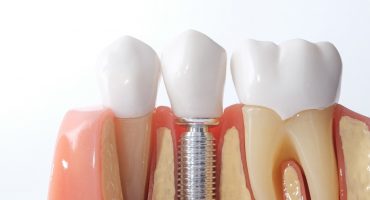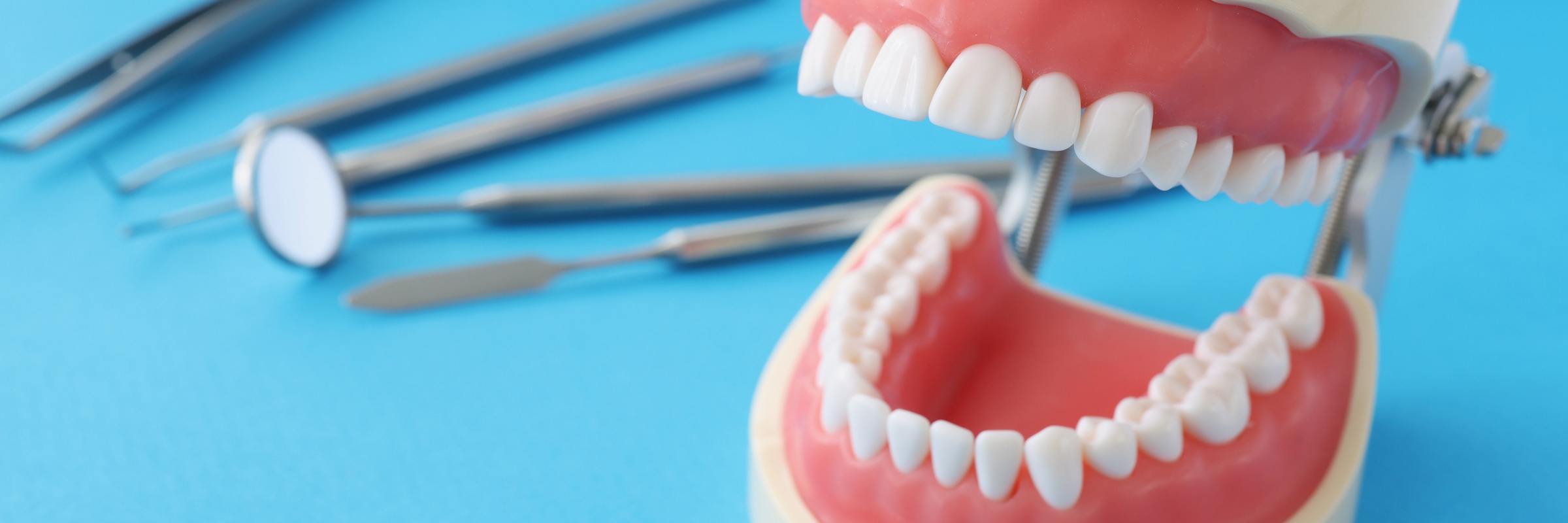Orthodontists deal with the diagnosis and treatment of deformities of the teeth and jaw. Not only children and adolescents can be provided with a clamp, adults are also increasingly opting for orthodontic treatment - be it for health or purely aesthetic reasons. Useful information about the main focuses of orthodontics and the course and costs of the therapy can be found here.
Treatment Areas of Orthodontics
If the teeth are crooked or if the upper and lower jaws are not in the correct position, the orthodontist can help. He examines teeth and jaw on malpositions such as too far protruding incisors or a back lower jaw and then creates a treatment plan.
Usually, clamps used, which shifts the teeth over a period of several years in the desired shape. This not only increases the life of the teeth, it also benefits the patient with a smoother smile. People who suffer from craniomandibular dysfunction (CMD) - a temporomandibular dysfunction - also find the right person to contact in an orthodontist.
When is orthodontist treatment necessary?
Orthodontic treatment is in many cases useful or even essential - for example, if the existing anomalies the endanger dental health. Problems with speaking or chewing speak for a presentation at the orthodontist.
However, treatment by an orthodontist may also be required or at least desirable for esthetic reasons. Crooked teeth and conspicuous gaps in the teeth are often perceived as a blemish by those affected, so it is advisable to get comprehensive advice on a possible therapy.
How does the orthodontic treatment work?
The orthodontic treatment extends over several years. This is partly because - in children and adolescents - natural growth is used. In addition, only weak forces may be used, so that the periodontium is not affected. The therapy consists of the following steps:
- Thorough and comprehensive diagnostics
- Creation of an individual therapy plan
- Treatment phase with regular controls and adjustments
- Maintenance phase
1. Diagnosis
In the first step, the orthodontist carries out a detailed examination of the teeth and temporomandibular joint. Subsequently, an impression of the upper and lower jaw is made, with the help of a plaster model of the teeth can be produced. This plaster model requires the orthodontist to assess the patient's position and to be able to make a precise measurement of the space in the jaw.
X-rays also help the doctor to assess tooth development and the individual growth pattern of the skull.
2. Therapy plan
After the orthodontist has a comprehensive picture, followed by a detailed conversation with the patient. The doctor explains the individual diagnosis and the planned course of treatment, including the necessary equipment and equipment. The duration of therapy and the cost of treatment can also be discussed in this interview.
The patient then receives a treatment plan, which must be submitted to the health insurance for approval.
3. Treatment phase
At the beginning of the treatment phase, the orthodontist integrates the races. If it is a removable clip, the patient receives all necessary information for their handling. This is followed every six to eight weeks by a check-up with any adjustments to the braces.
It is very important for the patient to wear the appliances regularly and to follow the oral hygiene instructions closely to ensure the success of the treatment.
4.Stabilization phase
Even if the desired treatment success has been achieved, the therapy must not simply be stopped. Instead, there follows a so-called stabilization phase in which the respective equipment must be carried on - usually over a period of twelve to 24 months.
The Denture must first consolidate before the patient is allowed to completely dispense with the braces. After wearing a fixed clasp is often a so-called retainer - that is, a permanently glued behind the front teeth wire - used, which remains over several years in the mouth.
At what age should children be treated orthodontically?
When a child should undergo orthodontic treatment depends on various factors , in particular on individual development and on the type and extent of any anomalies.
As a rule, treatments are only made from the age of nine. However, a first examination is useful in kindergarten to ensure that the teeth and jaw develop correctly. Follow-up examinations take place one to two years apart until it is clear whether treatment is necessary or not.
What are the options for orthodontic treatment for adults?
Even in adults, orthodontic treatment has good chances of success. However, it should be noted that the therapeutic options are limited due to the lack of growth. In addition, the denture must be in good condition overall.
If there is a slight or moderate malalignment, this can usually be corrected using removable plastic splints. In all other cases, a solid clasp is required, however, which can be invisibly mounted on the inside of the anterior teeth.
Does the health insurance cover the costs of treatment?
If the treatment for medical reasons is necessary, the costs for orthodontic treatment between the tenth and 18th year of life are covered by the health insurance.
If the treatment goes beyond the range of benefits of the statutory health insurance companies, however, additional payments must be accepted - for example for tooth-colored brackets or for the use of highly elastic wires. In general, orthodontic treatment is not provided for adults, unless the deformities are so severe that surgical intervention is required. Supplementary insurances usually cover the costs of treatment only after an accident.
Conclusion
Orthodontics has a permanent place in the field of dentistry. Children and adolescents, whose teeth grow askew, receive help here as well as adults whose temporomandibular joint does not function properly. After the treatment, the patient not only benefits from a healthy masticatory apparatus but also from a nice smile.
Weitere Beiträge

Implantology
Tooth loss can affect patients of all ages. Triggers may be, for example, accidents, tooth decay, periodontitis and tumors. The loss of teeth usually leads to severe limitations in the affected person in terms of functionality and appearance. Modern implantology provides a wide range of individual options for reliably eliminating the limitations and restoring functionality and aesthetics.



